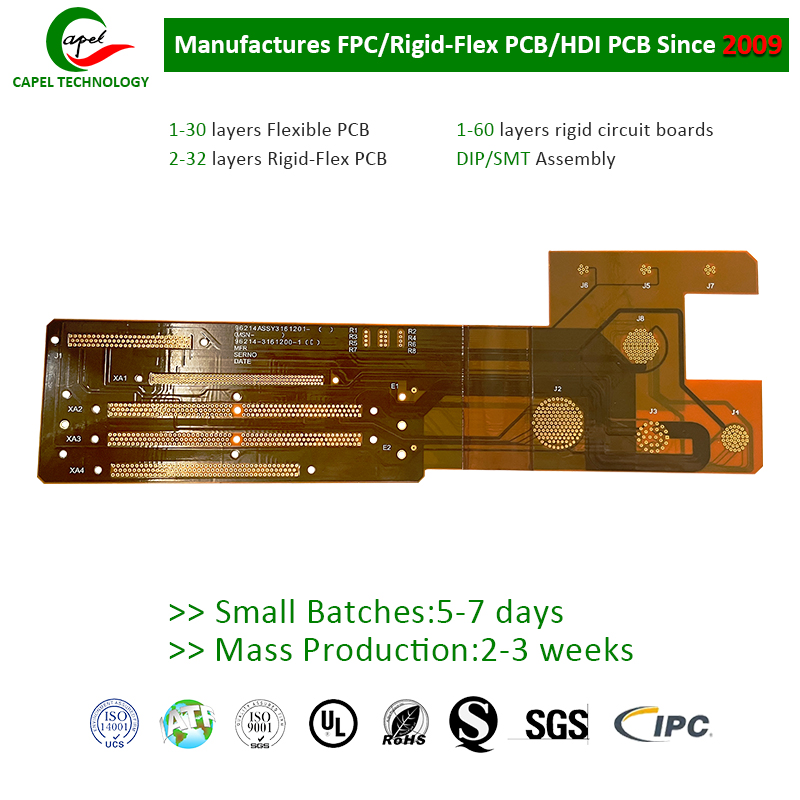In this article, we will explore the differences between FR4 and flexible PCBs, clarifying their uses and advantages.
When it comes to printed circuit boards (PCBs), there are a variety of options, each with their own unique characteristics and applications. Two commonly used types are FR4 and flexible PCB. Understanding their differences is critical to making informed decisions when designing and manufacturing electronic devices.
First, let’s discuss FR4, which stands for Flame Retardant 4. FR4 is a material widely used in the production of rigid PCBs. It is an epoxy resin laminate reinforced with fiberglass cloth to provide mechanical strength to the circuit board. The resulting combination is a robust, durable and affordable PCB suitable for a wide range of applications.
One of the main advantages of FR4 PCB is its high thermal conductivity. This property is particularly valuable in electronic circuits where efficient heat dissipation is critical. FR4 material effectively transfers heat away from components, preventing overheating and ensuring smooth operation of equipment.
Additionally, FR4 PCBs offer excellent electrical insulation properties. Fiberglass reinforcement provides insulation between the conductive layers, preventing any unwanted electrical interference or short circuits. This feature is critical, especially in complex circuits with multiple layers and components.
On the other hand, flexible PCBs, also known as flexible printed circuit boards or flexible electronics, are designed to be highly flexible and bendable. The substrate used in flexible PCB is usually polyimide film, which has excellent flexibility and high temperature resistance. Compared to FR4 PCBs, flexible PCBs can be bent, twisted or folded, making them ideal for applications requiring complex shapes or compact designs.
Flexible PCBs offer several advantages over rigid PCBs. First, their flexibility allows for easier integration into devices with limited space. Their shapes can be adapted to unconventional layouts, allowing for greater design freedom. This makes flexible PCBs ideal for applications such as smartphones, wearable technology, medical devices and automotive electronics.
In addition, flexible printed circuit boards have the advantage of reducing assembly and interconnection complexity. Traditional rigid PCBs often require additional connectors and cables to connect various components. Flexible PCBs, on the other hand, allow the necessary connections to be integrated directly onto the circuit board, eliminating the need for additional components and reducing overall assembly costs.
Another major advantage of flexible PCBs is their reliability. The absence of connectors and cables eliminates potential points of failure and increases the overall durability of the circuit. In addition, flexible PCBs have excellent resistance to vibration, shock and mechanical stress, making them suitable for applications with frequent movement or harsh environments.
Despite their differences, FR4 and flexible PCBs have some similarities. Both can be made using similar manufacturing processes, including etching, drilling and welding. Additionally, both types of PCBs can be customized to meet specific design requirements, including number of layers, size, and component placement.
In summary, the main difference between FR4 and flexible PCBs is their rigidity and flexibility. FR4 PCB is highly rigid and has excellent thermal and electrical properties, making it suitable for a wide range of applications. Flexible PCBs, on the other hand, offer unparalleled flexibility, allowing complex designs and integration into space-constrained devices.
Ultimately, the choice between FR4 and flexible PCB depends on the specific requirements of the project. Factors such as intended application, space constraints and flexibility requirements should all be carefully considered. By understanding the differences and advantages of each type, designers and manufacturers can make informed decisions to optimize the performance and reliability of their electronic devices.
Post time: Oct-11-2023
Back







